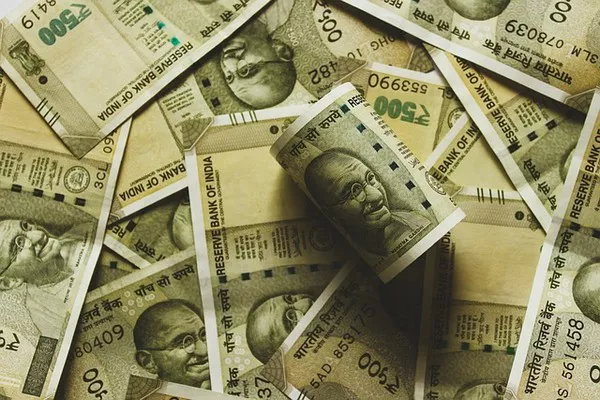The Indian Rupee (INR), with its unique symbols and a rich history, reflects the diverse and dynamic nature of the Indian economy. India’s currency notes come in various denominations, each with its distinctive design and purpose. In this article, we will delve into the details of Indian Rupee denominations, exploring their history, security features, and significance in the country’s financial landscape.
The History of Indian Rupee Denominations
The history of the Indian Rupee dates back to ancient times when it was used as a medium of exchange in the Indian subcontinent. Over the centuries, the rupee has seen various changes in its design and denominations. The modern Indian Rupee denominations, as of my last knowledge update in January 2022, are issued by the Reserve Bank of India (RBI) and include ₹2, ₹5, ₹10, ₹20, ₹50, ₹100, ₹200, ₹500, and ₹2,000 notes.
₹2 Note
The ₹2 note is the smallest denomination in India’s paper currency. It features a simplistic design with the watermark of Mahatma Gandhi and a security thread to prevent counterfeiting. While less commonly used in daily transactions, ₹2 notes are still considered legal tender and hold a special place in the currency system.
₹5 Note
The ₹5 note, featuring a picture of the Red Fort on the reverse side, is a reminder of India’s rich historical heritage. It is commonly used for small transactions and is easily accessible to the general public.
₹10 Note
The ₹10 note showcases the Konark Sun Temple, a UNESCO World Heritage Site located in Odisha. This denomination is widely circulated and is commonly used for everyday expenses.
₹20 Note
The ₹20 note portrays the Ellora Caves, another UNESCO World Heritage Site known for its rock-cut temples. This denomination is an integral part of the Indian currency and is used for various transactions.
₹50 Note
The ₹50 note displays an image of the Indian Parliament building, a symbol of India’s democratic values and governance. It is widely accepted and used for mid-range transactions.
₹100 Note
The ₹100 note features a motif of Rani ki Vav, a stepwell in Patan, Gujarat, recognized as a UNESCO World Heritage Site. It is an essential part of the Indian currency system and serves various economic purposes.
₹200 Note
The ₹200 note highlights the Sanchi Stupa, an ancient Buddhist monument situated in Madhya Pradesh. This denomination was introduced to facilitate smoother transactions and reduce the need for lower denomination notes.
₹500 Note
The ₹500 note shares its reverse design with the ₹5 note, featuring an image of the Red Fort. However, it is larger and incorporates advanced security features to prevent counterfeiting. The ₹500 note is widely used for various transactions, including e-commerce and larger purchases.
₹2,000 Note
The ₹2,000 note was introduced in 2016 as part of the government’s demonetization initiative. It showcases the Mangalyaan, India’s Mars Orbiter Mission, on the reverse side. Although this denomination was met with mixed reactions, it remains an essential part of India’s currency system.
Commemorative and Special Edition Banknotes
In addition to the standard denominations, India has issued commemorative and special edition banknotes to celebrate significant events, personalities, and achievements. These notes are prized by collectors and are a testament to India’s cultural and historical diversity.
Some notable commemorative banknotes include those honoring Mahatma Gandhi’s 150th birth anniversary, the 75th anniversary of the Azad Hind Government, and the birth centenary of Dr. Vikram Sarabhai, a renowned space scientist.
The Significance of Indian Rupee Denominations
Indian Rupee denominations play a crucial role in the country’s economy. They facilitate everyday transactions and reflect the nation’s cultural and historical heritage. Different denominations cater to a wide range of financial needs, from small-value purchases to larger investments.
These denominations are also instrumental in financial inclusion, ensuring that people from all walks of life can participate in the economic system. They are used by individuals, businesses, and government entities, contributing to the overall economic growth of the country.
Security Features of Indian Rupee Denominations
To safeguard the integrity of the currency, Indian Rupee denominations incorporate several security features. These features are designed to deter counterfeiting and maintain trust in the currency system. Some of the security features common to most denominations include:
Watermark: When held against the light, a watermark of Mahatma Gandhi, the Father of the Nation, becomes visible.
Security Thread: A vertical security thread with the words “Bharat” (in Hindi) and “RBI” alternates in the thread. This thread appears as a continuous line when the note is held against the light.
Microlettering: Tiny letters containing the denominational numeral of the note are present in the Mahatma Gandhi portrait and the RBI seal.
See-Through Register: Holding the banknote against the light allows a complete pattern to be seen.
Optically Variable Ink (OVI): Some denominations feature security ink that changes color when tilted.
Raised Printing: Certain parts of the design are raised, providing a tactile element to detect authenticity.
Fluorescence: Under ultraviolet (UV) light, different parts of the banknotes fluoresce in various colors, revealing hidden features.
Intaglio Printing: High-quality intaglio printing is used for the Mahatma Gandhi portrait, the RBI seal, and the denominational numeral.
Conclusion
Indian Rupee denominations not only serve as a medium of exchange but also carry the weight of India’s history, culture, and economic significance. Each denomination has its unique design, security features, and role in the economy. Understanding these denominations is essential for everyone who engages in financial transactions within the country, and it highlights the beauty and diversity of India’s currency. As the Indian economy continues to evolve, the design and denominations of the Indian Rupee may see further changes, reflecting the nation’s ongoing growth and development.


